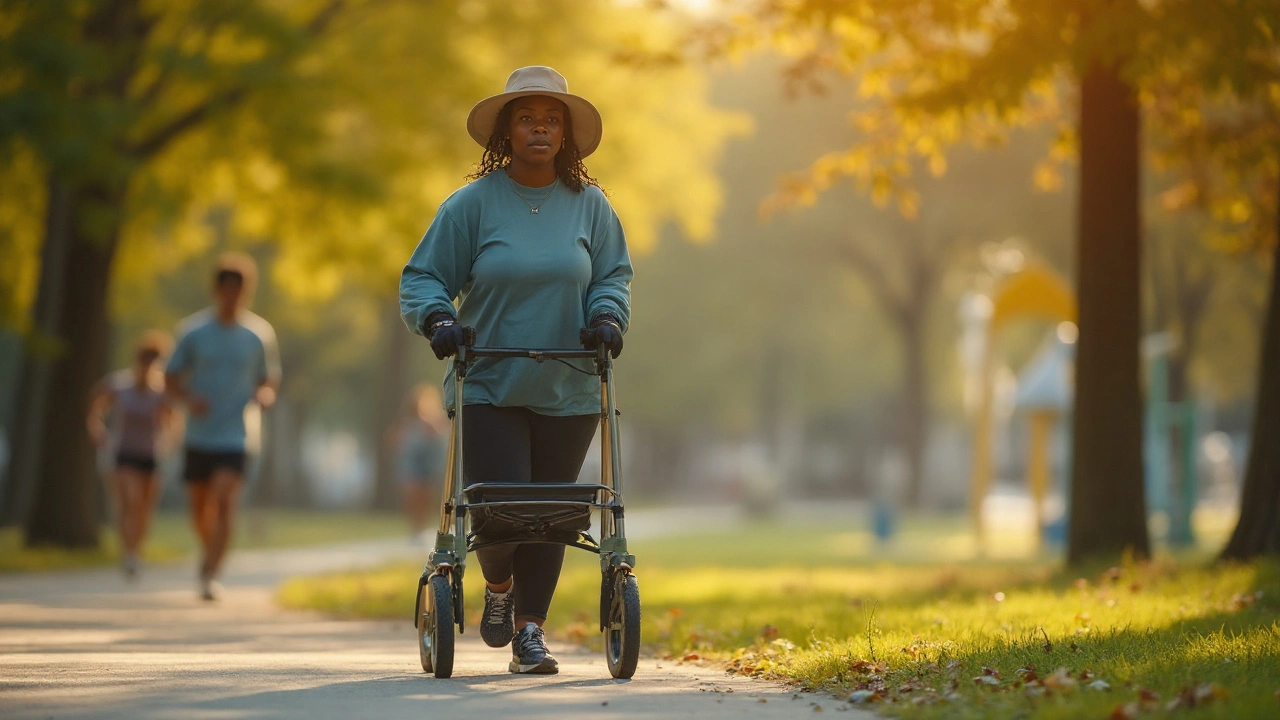Mobility Aids for Porphyria – What Works Best?
If you have porphyria, everyday tasks can feel tougher than they should. Painful skin attacks, nerve problems, or fatigue might make walking long distances a real challenge. That’s where mobility aids step in: they give your body extra support so you can keep doing the things you love without over‑exerting yourself.
Choosing the Right Aid for Your Symptoms
The first thing to think about is what part of your body needs help. If you get frequent muscle cramps or weakness in your legs, a sturdy cane or walking stick can give you balance and take some weight off your joints. For more severe weakness, a roll‑ator with seats and brakes lets you pause whenever you need a break.
Some people with porphyria experience nerve pain that makes standing uncomfortable. In those cases a lightweight wheelchair—foldable for easy storage—might be the safest bet. If you only need short‑term support after an acute attack, a knee scooter can let you move around without putting pressure on your feet.
Making Your Aid Comfortable and Safe
Fit matters. A cane that’s too tall will force you to lean forward; too short and you’ll hunch over. Adjust the height so your elbow stays at a 90‑degree angle when you hold it. For wheelchairs, check that the seat depth lets you sit with your knees slightly bent—this reduces pressure on sore nerves.
Don’t forget accessories. Anti‑slip grips on canes, padded wrist straps for walkers, and cushioned seats for wheelchairs all add comfort during long days. Keep the wheels clean and check brakes weekly; a stuck brake can turn a simple trip into a fall.
When you’re buying online, look for reputable sellers with clear return policies—this way you can test the aid at home and make sure it fits before committing.
Where to Get Help and Support
Your doctor or porphyria specialist can recommend specific devices based on your attack history. Many hospitals have occupational therapists who can do a quick assessment and suggest the best options. If you need financial help, check if your health insurance covers mobility aids; most policies require a prescription but will cover a good portion of the cost.
There are also charities focused on rare diseases that offer grants for assistive equipment. A quick Google search for “porphyria mobility aid grant” can point you to the right places.
Finally, connect with other porphyria patients online. Forums and social media groups often share product reviews, tips for customizing devices, and even second‑hand deals that save money.
Bottom line: the right mobility aid can turn a day full of pain into a manageable routine. Pick an aid that matches your specific symptoms, make sure it’s comfortable, and don’t hesitate to ask professionals for guidance. With the proper support, you’ll find it easier to stay active, keep up with appointments, and enjoy everyday moments without constant fatigue.

Smart tools and gear that help people with porphyria live more independently-light protection, mobility, work setups, travel tips, and funding basics.
Read More